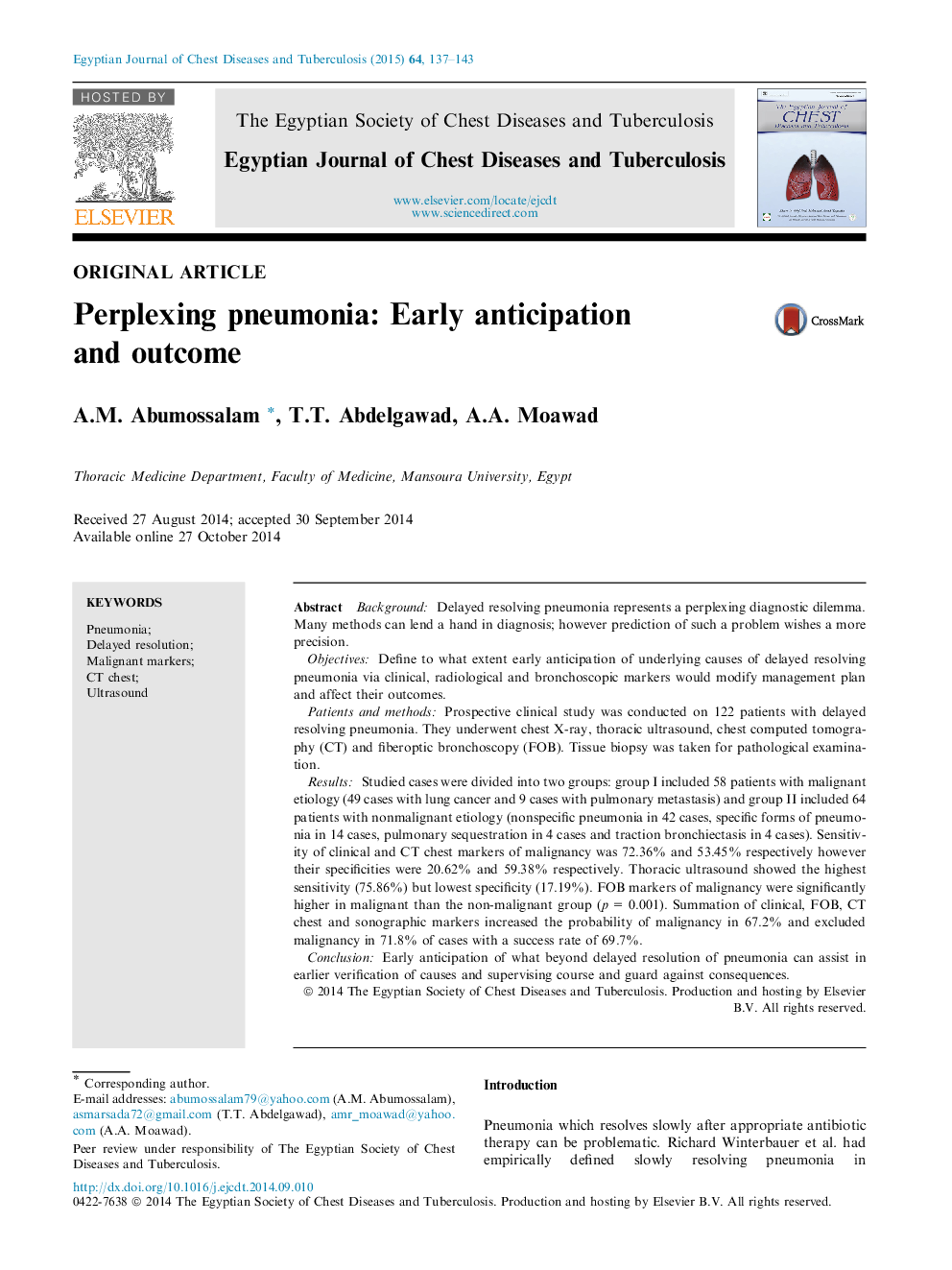| Article ID | Journal | Published Year | Pages | File Type |
|---|---|---|---|---|
| 3400097 | Egyptian Journal of Chest Diseases and Tuberculosis | 2015 | 7 Pages |
BackgroundDelayed resolving pneumonia represents a perplexing diagnostic dilemma. Many methods can lend a hand in diagnosis; however prediction of such a problem wishes a more precision.ObjectivesDefine to what extent early anticipation of underlying causes of delayed resolving pneumonia via clinical, radiological and bronchoscopic markers would modify management plan and affect their outcomes.Patients and methodsProspective clinical study was conducted on 122 patients with delayed resolving pneumonia. They underwent chest X-ray, thoracic ultrasound, chest computed tomography (CT) and fiberoptic bronchoscopy (FOB). Tissue biopsy was taken for pathological examination.ResultsStudied cases were divided into two groups: group I included 58 patients with malignant etiology (49 cases with lung cancer and 9 cases with pulmonary metastasis) and group II included 64 patients with nonmalignant etiology (nonspecific pneumonia in 42 cases, specific forms of pneumonia in 14 cases, pulmonary sequestration in 4 cases and traction bronchiectasis in 4 cases). Sensitivity of clinical and CT chest markers of malignancy was 72.36% and 53.45% respectively however their specificities were 20.62% and 59.38% respectively. Thoracic ultrasound showed the highest sensitivity (75.86%) but lowest specificity (17.19%). FOB markers of malignancy were significantly higher in malignant than the non-malignant group (p = 0.001). Summation of clinical, FOB, CT chest and sonographic markers increased the probability of malignancy in 67.2% and excluded malignancy in 71.8% of cases with a success rate of 69.7%.ConclusionEarly anticipation of what beyond delayed resolution of pneumonia can assist in earlier verification of causes and supervising course and guard against consequences.
